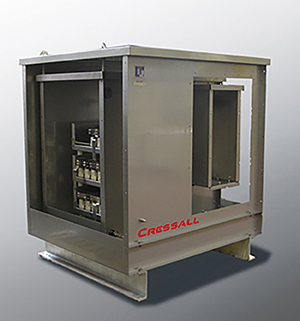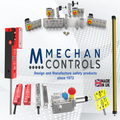
Posted to News on 14th Sep 2020, 00:00
Important considerations for designing electrical enclosures
Electrical equipment requires robust protection and a durable enclosure is vital to its safety. Andrew Keith, product development director at power resistor manufacturer Cressall Resistors, explores the considerations when designing an effective enclosure.

When designing a complex network of electrical components, an enclosure may be something of an afterthought. After all, it is simply a box that houses electrical components and connections, wiring, machinery controls and related equipment – all the important stuff.
However, it is this misconception that leads to failure – especially if important design consider-ations are forgotten or unfulfilled. Although enclosures can seem like a non-critical element in electrical system design, a failure to secure electrical equipment can result in a build up of moisture or dirt, a drastic change in temperature and poor ventilation.
Keep your cool
When designing a heat management system for an enclosure, manufacturers must account for external temperature fluctuations such as solar gain – heat from the sun. In addition, electrical equipment can generate significant heat as a by-product of their operation, known as losses, inside the cabinet. Failing to safely remove these losses will increase the temperature inside the enclosure and could adversely affect its contents. One remedy is passive cooling. This technique uses the simple principal of convection to distribute heat from a higher temperature area to a lower one. To do this, enclosures must be designed with strategically placed vents that replace hot air inside the enclosure with cooler, external air.
However, the feasibility of passive cooling depends on its environment and the ambient temperature surrounding the enclosure must remain lower than the air inside it. Additional air filters may also be required to prevent dust or dirt from infiltrating the enclosure. Instead, design engineers may want to opt for active cooling by installing heat exchangers or air conditioners to cool the air inside the enclosure.
A material matter
Of the numerous materials available for electrical enclosure construction, each offers its own protective benefits. While painted carbon steel is the most cost-effective metallic choice, it has limited resistance to solvents, alkalis and acids and is thus best suited to indoor applications. Stainless steel provides a much higher resistance and variants such as grade 316 are specified in industries that require resistance to chemical attack, such as pharmaceutical manufacturing, which must avoid excessive metallic contamination. As the material has better resistance against sulphates, seawater and high temperatures, we recommend this type of steel as the preferred choice for both indoor and outdoor applications.
Away from metals, fiberglass is a lighter weight choice, making it suitable for wall or pole-mounted installations. As fiberglass is not conductive, any open circuits would stay safely inside the enclosure and wouldn’t be transmitted through the material. The conductivity offered by a metallic enclosure enables it to be ground connected to reduce the risk of electrical shock should an exposed conductor come into contact with the enclosure.


















